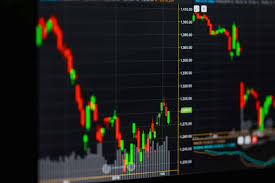The Future of AI Trading in Forex A Comprehensive Guide

The Future of AI Trading in Forex: A Comprehensive Guide
In today’s fast-paced financial markets, the fusion of artificial intelligence (AI) and Forex trading is quickly reshaping how traders operate. The ability of AI to analyze massive datasets, recognize patterns, and make predictions has led to improved trading strategies and outcomes. More traders are now looking for ways to integrate ai trading forex minereum.com AI into their trading arsenals, seeking to leverage technology for enhanced performance. This article delves into the intricacies of AI trading in Forex, highlighting its advantages, challenges, and the future prospects of this innovative approach.
Understanding AI and Its Role in Forex Trading
Artificial Intelligence refers to the simulation of human intelligence in machines that are programmed to think and learn. In the context of Forex trading, AI can analyze market data faster and more accurately than any human trader, making it an invaluable tool. Algorithms powered by AI can process historical data, monitor market conditions in real-time, and execute trades automatically based on pre-defined criteria.
1. Machine Learning Algorithms
At the heart of AI trading lies machine learning (ML), a subset of AI that focuses on building systems that improve their performance with experience. In Forex trading, ML algorithms can identify trading opportunities by recognizing patterns in price movements. These algorithms can adapt to changing market conditions and optimize trading strategies over time.
2. Natural Language Processing
Natural language processing (NLP) is another crucial aspect of AI that enables traders to analyze news and sentiment in the market. By processing news articles, social media posts, and economic reports, NLP can help traders gauge market sentiment and adjust their strategies accordingly. This capability can be particularly useful in the Forex market, where geopolitical events and economic indicators can dramatically influence currency values.
Advantages of AI Trading in Forex
The integration of AI in Forex trading offers several key advantages:
1. Speed and Efficiency
AI systems can process vast amounts of data in milliseconds, enabling timely decision-making that human traders cannot match. This speed can result in better entry and exit points, maximizing profits while minimizing losses.
2. Emotional Discipline
Emotional trading is one of the greatest pitfalls of Forex trading. AI systems, on the other hand, operate based on data and algorithms, free from human emotions. This means they can make decisions based purely on logic and analysis, reducing the impact of greed and fear on trading outcomes.
3. Backtesting And Optimization
AI trading systems can backtest strategies against historical data to assess their viability and effectiveness. This process allows traders to refine their strategies before deploying them in live trading environments, leading to more informed decision-making.
Challenges of AI Trading in Forex

While AI trading presents numerous benefits, it is not without its challenges:
1. Data Quality and Availability
The success of AI trading largely depends on the quality of the data being analyzed. Inaccurate or incomplete data can lead to poor trading decisions. Additionally, obtaining relevant data in real-time can be a logistical challenge.
2. Market Volatility
The Forex market is known for its volatility, which can render AI algorithms ineffective if not properly designed to adapt. A sudden economic shift or unforeseen event can lead to rapid price changes, which an algorithm may struggle to interpret correctly.
3. Regulatory Considerations
As AI continues to permeate trading practices, regulatory bodies are beginning to scrutinize AI-driven trading strategies. Understanding and complying with evolving regulations is essential for any trader utilizing AI technologies.
The Future of AI Trading in Forex
The future of AI trading in Forex appears bright, with rapid advancements in technology paving the way for even more sophisticated trading systems. Some trends to watch for include:
1. Enhanced Predictive Analytics
As machine learning continues to evolve, predictive models will become increasingly accurate. By incorporating more variables into analysis, traders can achieve a better understanding of market dynamics and enhance their strategies.
2. Integration with Other Technologies
The integration of AI with other technologies, such as blockchain and big data analytics, will create robust trading platforms capable of offering even deeper insights. Traders will benefit from improved transparency, security, and efficiency in the Forex market.
3. Democratization of Trading
As AI technologies become more accessible, retail traders will have the opportunity to leverage advanced trading tools that were once only available to institutional investors. This democratization of trading will encourage more participation in the Forex market, potentially impacting market dynamics.
Conclusion
AI trading is undoubtedly changing the landscape of Forex trading. With its ability to analyze vast datasets, recognize patterns, and execute trades with speed and accuracy, traders can make more informed decisions while minimizing human errors. However, as with any technology, it is essential for traders to remain vigilant regarding the inherent challenges and risks associated with AI trading. By understanding the advantages and obstacles, traders can better prepare themselves for the future of Forex trading in an increasingly automated world.






